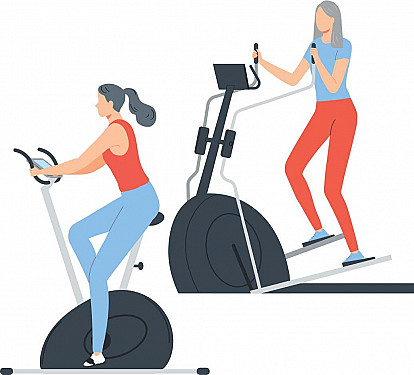Tips to stay safe when you reach up
Avoid shoulder injuries and fall risks by following a few important strategies.
- Reviewed by Anthony L. Komaroff, MD, Editor in Chief, Harvard Health Letter; Editorial Advisory Board Member, Harvard Health Publishing

Is reaching up and grabbing something safe as we age? Not always. Activities we once did without a second thought — like reaching for a bowl on a high shelf or grabbing a hanger from a high clothes rack — can become surprisingly tricky. And what was once automatic now calls for more caution.
Reaching gets risky
Overhead reaches become more challenging because of physical changes that occur with age. Here are some examples.
You lose range of motion. "A few years ago, you could raise your arms straight above you, so they were next to your ears. But now you've probably lost flexibility in your shoulders and your posture is more slouched, which means you can't raise your arms as high. That means you have to reach farther to get something," says Jim Zachazewski, a physical therapist with Mass General Brigham Sports Medicine.
Your balance declines. Reaching your arms overhead shifts your center of gravity and requires good balance. But balance becomes weaker with age due to changes in vision, hearing, inner ears, muscles, joints, and nerves. "And if your range of motion is also reduced, you might bend a little backward or go up on tiptoes when you reach up, making it even more difficult to balance," Zachazewski says.
Muscles are weaker. You need strength and a good grip to hold on to an object you've reached for. But weaker muscles might keep you from being able to grasp and control an object firmly before you can set it down. This is also true if you have hand pain.
Potential injuries
While the simple act of reaching up doesn't seem dicey, it can turn ugly in a hurry with one of the following consequences.
Shoulder injuries. When you reach up now, you're often stretching beyond your available range. You can strain or tear a shoulder muscle or tear a tendon in the rotator cuff—the group of tendons in the shoulder that attach muscles to bone.
Neck injuries. "You also lose range of motion in the neck as you age. If you reach up too far and arch your back, you might strain a neck muscle or neck joint," Zachazewski says.
Falls. Losing your balance in mid-grab can lead to a fall — one of the top causes of hip fracture and brain in-jury among people 65 or older. Falls can sideline you for months, or even lead to an early death.
What to do in the moment
It's easy to reach up without thinking. What should you do if you find yourself reaching beyond your range of motion, suddenly standing on tiptoe, or holding something that's too heavy?
Stop the activity, whether it's mid-reach or mid-lift. "Set the object down or just let go of it," Zachazewski says. "You're more important than the object. It's better to drop it than fall over."
Build a better reach
Hopefully, you're regularly strengthening and stretching your arm and shoulder muscles to keep them strong and flexible.
You should also use extra care when reaching up for an object. Zachazewski recommends using a solid step stool to avoid going on tiptoe. If a step stool is clearly unnecessary, take a stable position with one foot forward and the other a little behind. Make sure nothing is behind you that would hurt if you fell on it.
Also, identify something to hold on to, like a counter, cabinet, doorframe, closet bar, or the handhold of a ladder. "Where will your free arm make contact if you need to hold yourself steady?" Zachazewski asks.
He also advises estimating if the object is too heavy before lifting it. "Sliding it back and forth will give you a good idea," Zachazewski says.
And determine in advance where you'll set down the object. It needs to be an uncluttered spot and as close to you as possible.
Finally, ask someone to assist you if you're unsure about your ability to reach up and get something safely. The risks far outweigh the benefits of trying to get it on your own.
Move of the month: Sword pull
Hold one end of a resistance band in your left hand by your hip, using that hand as an anchor point. Grasp another point on the band with your right hand, positioned near your left one. (There will be loose band hanging between your hands. The more band hanging, the less resistance you'll have.) Raise your right arm up and out, on a diagonal, then slowly lower to the starting position. Repeat 10 times, then do the exercise with the other arm. Exercise photos by Michael Carroll |
Image: © zoranm/Getty Images
About the Author

Heidi Godman, Executive Editor, Harvard Health Letter
About the Reviewer

Anthony L. Komaroff, MD, Editor in Chief, Harvard Health Letter; Editorial Advisory Board Member, Harvard Health Publishing
Disclaimer:
As a service to our readers, Harvard Health Publishing provides access to our library of archived content. Please note the date of last review or update on all articles.
No content on this site, regardless of date, should ever be used as a substitute for direct medical advice from your doctor or other qualified clinician.


















